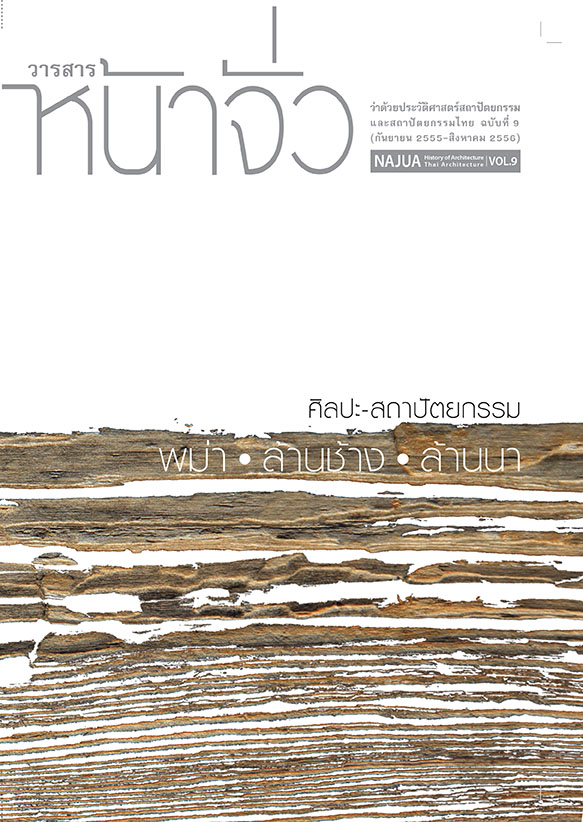แนวคิดรูปแบบของไทย ผ่านภูเขาแห่งความศรัทธาตามรอยการวิเคราะห์ของเพลโต Thai Concept of Forms : A Case of Mountain Religion through Platoian Analysis
Main Article Content
Abstract
บทคัดย่อ
ภูเขาในที่นี้ไม่ใช่ภูเขา แต่เป็นภูเขาที่แสดงถึงความยิ่งใหญ่แห่งความศรัทธา และอยู่บนยอดเจดีย์ตามคติความเชื่อเรื่องไตรภูมิที่มีเขาพระสุเมรุเป็นศูนย์กลางแห่งจักรวาล บทความนี้เป็นการวิเคราะห์แนวคิดรูปแบบของไทยผ่านสัญลักษณ์ของภูเขาแห่งความศรัทธาโดยใช้ทฤษฎีแบบของเพลโต โดยการทบทวนวรรณกรรม การเกิดปรากฏการณ์ และการตีความด้านคติความเชื่อ ซึ่งการวิเคราะห์ทฤษฎีแบบของเพลโตกับแนวคิดของไทยสามารถนำมาอธิบายเป็นการรับรู้เชิงรูปธรรมในโลกสมมติ และการรับรู้เชิงปัญญาในโลกแห่งแบบ โดยแบ่งออกเป็น 4 ระดับ ได้แก่ 1. จินตนาการ 2. ความเชื่อ 3. เหตุผล และ 4. ปัญญาที่แท้จริง การรับรู้เชิงรูปธรรมสอดคล้องกับการเข้าถึงความรู้ในรูปแบบความรู้เชิงบริสุทธิ์ โดยใช้ตัวอย่างจากการสร้างศาสนสถานในประเทศไทยที่แสดงรูปแบบจากอิทธิพลความเชื่อของภูเขาและการน้อมรับแนวคิดที่ได้มีการเปลี่ยนแปลงตามกาลเวลา
Abstract
The Mountain in this context is not the physical mountain, but is interpreted on huge belief of faith. The mountain appears on the pinnacle of Thiphum which is symbolized the Mount Meru as the center of the universe. This paper is the analysis of Thai concept of Forms inspired by mountain through Platoian’s Theory of Forms. After studying inductive reasoning from literatures, phenomena, and the interpretation of religious space manipulation, the analysis of Plato’s Theory of Forms could explain two perceptions of forms; the objective world and recognition of the intellectual world. Plato’s World of Forms also elaborates levels of perceptions in four levels, that are 1) Imagining 2) Belief 3) Reasoning, and 4) Perfect Intelligence. The perception of concrete in accrodance with the access to knowledge in the pure form. The paper raises cases of how monasteries in Thailand were influenced by the mountain’s concept and how the ideological recognition has changed over time.


